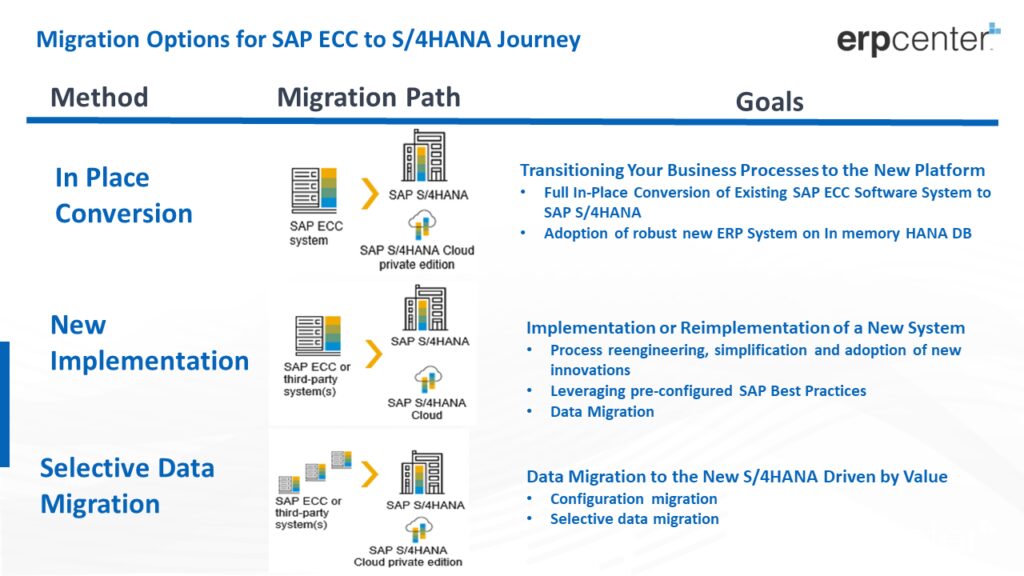A Migration Strategy for Existing SAP Customers to S/4HANA
Moving from an existing SAP ERP solution to SAP S/4HANA can be a daunting task for any organization. However, with the “Selective Data Transition” approach, existing SAP customers can make the transition with minimum disruption and impact to their business processes. In this article, we will explore the Selective Data Transition approach, one of three possible approaches, and discuss how it can benefit organizations looking to make the transition to SAP S/4HANA.

The Selective Data Transition Approach
The Selective Data Transition approach is a migration strategy that allows existing SAP customers to move to SAP S/4HANA by selectively transferring relevant data and processes from their existing SAP ERP solution to the new system. This approach is particularly useful for organizations that have complex ERP landscapes and need to migrate to SAP S/4HANA with minimal disruption to their business processes.
Selective Data Transition allows organizations to take advantage of new features and capabilities of SAP S/4HANA while retaining their existing business processes and data. This approach can help reduce the cost and complexity of migration while ensuring that the organization can continue to operate effectively during and after the migration.
Benefits of Selective Data Transition
The Selective Data Transition approach offers several benefits to organizations looking to migrate to SAP S/4HANA:
Steps for Selective Data Transition
The following are the steps involved in the Selective Data Transition approach
Conclusion
The Selective Data Transition approach is an effective migration strategy for organizations looking to move to SAP S/4HANA. By selectively transferring relevant data and processes, organizations can minimize the complexity and cost of migration while ensuring that their business processes continue to function effectively. With the right planning and execution, organizations can leverage the benefits of SAP S/4HANA quickly and efficiently, helping them stay ahead of the competition and achieve their business objectives.


